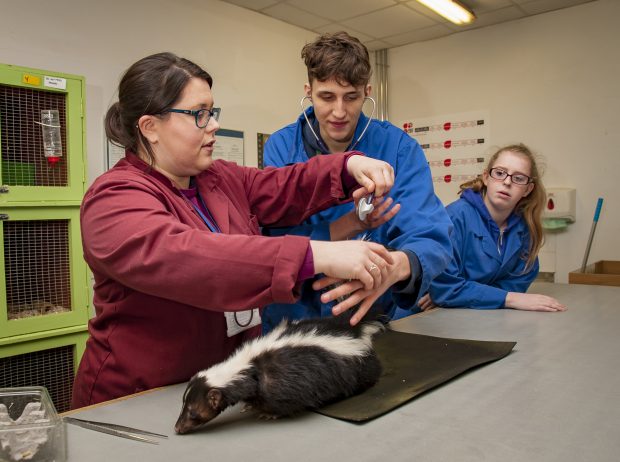Since April 2017, any provider wishing to train apprentices must be included on the register of apprenticeship training providers. We inspect all providers that receive apprenticeship funding from the Education & Skills Funding Agency or through the apprenticeship levy and that deliver apprenticeships at levels 2 to 5. A number of these providers are now eligible for inspection for the first time.
We usually inspect a new provider within 3 years of it beginning to deliver education and training programmes. But, because of the large volume of these new apprenticeship training providers and the potential risk to quality, Her Majesty’s Chief Inspector, Amanda Spielman, announced in November 2017 that inspectors would carry out early monitoring visits to a sample of new apprenticeship providers. The Department for Education (DfE) has since provided additional funding to make sure that we have the resources to carry out monitoring visits to all these providers.

We will now be carrying out a monitoring visit to all newly funded apprenticeship training providers that have been delivering level 2 to 5 apprenticeships since April 2017. This visit will normally be within 24 months of their starting to deliver funded training. They will then have a full inspection normally within 24 months from when we publish their monitoring visit report.
By the end of November 2018, we had published more than 90 reports from monitoring visits to new providers.
Themes that inspectors look at
Monitoring visits for new providers are different to full and short inspections. They normally take place over 2 days. Inspectors do not cover all aspects of the inspection framework. Inspectors make progress judgements on 3 themes:
- Leadership. How much progress have leaders made to ensure that they meet all the requirements of successful apprenticeship provision?
- The quality and outcomes of training. What progress have leaders and managers made to make sure that apprentices receive high-quality training that leads to positive outcomes?
- Safeguarding. How much progress have leaders and managers made in ensuring that safeguarding arrangements are effective?
Inspectors look at a provider’s capacity to deliver high-quality training. They check that the provider understands the requirements to make sure that apprentices train in environments that take safety and well-being seriously.

Inspectors also check that there are enough tutors with the appropriate experience and expertise. They will want to see that providers have clear plans in place to ensure that they deliver the programme successfully.
Inspectors make a progress judgement on each theme, concentrating on how the themes impact on apprentices. Is the provider making insufficient, reasonable or sufficient progress?
Below, we explain these progress judgements and give some examples of ways in which providers are showing progress – or a lack of it – from our published monitoring visit reports.
Insufficient progress and the issues
A provider makes insufficient progress when it takes slow or insubstantial action to help apprentices to progress. This may be because, for example:
- managers have not put the necessary systems, processes or resources in place in a timely manner to ensure that they deliver the programme successfully
- apprentices do not learn enough that is new beyond their existing knowledge, skills and behaviours
- apprentices do not receive sufficient useful off-the-job training that makes a difference to their knowledge and expertise
- leaders and managers do not have oversight of the progress that apprentices make
- there is a culture in which staff do not challenge bullying, discrimination or harassment enough
An example of insufficient progress
On a monitoring visit, inspectors found that:
- leaders and managers did not give sufficient consideration to apprentices’ prior knowledge, experience and existing qualifications when recruiting to the programme
- leaders and managers did not give enough attention to the skills and behaviours that apprentices wish to develop, or to their longer-term career goals
- too many apprentices were accomplishing little more than accrediting pre-existing knowledge and skills
Reasonable progress
Reasonable progress indicates that a provider is:
- taking actions that are having a beneficial impact on apprentices
- making improvements that are sustainable
- making sure that the improvements are based on thorough quality assurance procedures
An example of reasonable progress
On a monitoring visit, inspectors found:
- a comprehensive recruitment process that ensures that appropriate candidates are recruited as apprentices
- a rigorous assessment and interview process that employers highly value
- managers, trainers and employers working together to structure the curriculum so that apprentices gained the high-level skills they needed to work in the relevant sector
- trainers who are very proactive in assessing apprentices’ progress to ensure that on-the-job training was effective; however, some apprentices made slow progress because trainers did not monitor the apprentices’ college-based work consistently enough
- that the proportion of apprentices who remain on their programmes was high
Significant progress
Significant progress indicates that progress has been rapid and is having a considerable beneficial impact on apprentices, enabling them to develop high-level skills that they apply confidently and independently at work.
An example of significant progress
On a monitoring visit, inspectors found:
- leaders and managers working extremely closely with employers to ensure that apprentices get high-quality on- and off-the-job training
- apprentices receiving highly effective careers information, advice and guidance that ensured that they were on the right apprenticeship for them to fulfil their career goals
- managers and tutors intervening quickly and effectively so that apprentices get back on track if they have fallen behind
- each apprentice benefiting from comprehensive training plans to gain the knowledge, skills and behaviours they need
The safeguarding element
Inspectors want to see that providers’ relationships with employers are effective and stable and that they have processes in place to tackle bullying, harassment and discrimination. Providers should meet safeguarding expectations and understand their legal obligations under the ‘Prevent’ duty. The DfE has published new guidance on the ‘Prevent’ duty in relation to work-based learners.
Providers should make sure that all apprentices are appropriately employed: apprenticeships require apprentices to have a job with regular hours. No apprentice should be on a zero-hours contract.
What we found
From the monitoring visits so far, we have found a wide variety in the quality of apprentices’ training.
Of the new providers that had received a monitoring visit and had their report published by 30 November 2018:
- 20% had at least one insufficient progress judgement
- 63% had a reasonable progress judgement for all 3 themes
- the remaining providers received at least one judgement of significant progress
We design our monitoring visits to check that providers know about the requirements, regulations and expectations of high-quality apprenticeships. Inspection aims to make sure that all apprentices get the high-quality training and support they deserve. We want to make sure that they develop the knowledge and skills they need to succeed in their chosen occupation.
You can keep up-to-date with Ofsted news by signing up for email alerts. You can also follow Ofsted on Twitter.
